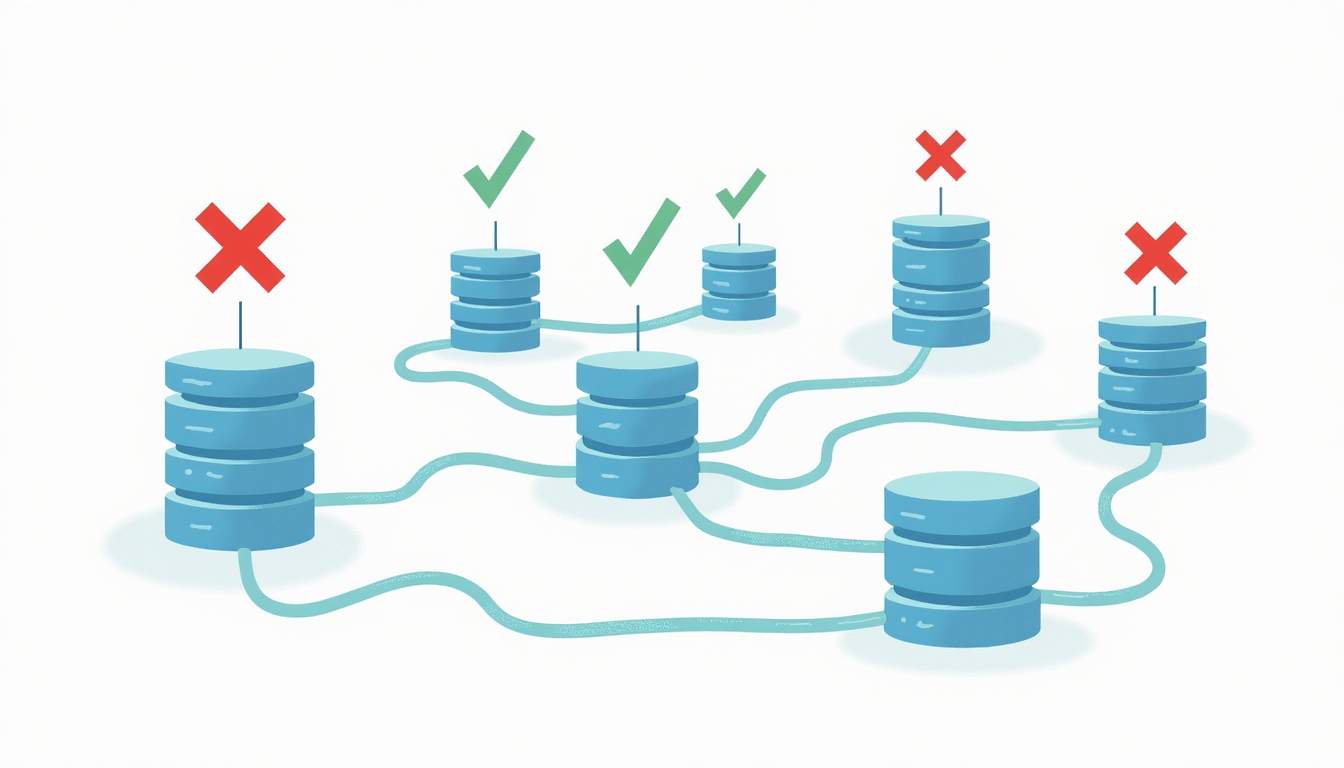Real-Time Health Checks for RPC Providers
In the rapidly evolving Web3 ecosystem, the reliability of blockchain applications hinges on the robustness of their underlying infrastructure. Remote Procedure Call (RPC) providers serve as the critical gateway between decentralized networks and applications, enabling seamless communication and data exchange. However, RPC endpoints are prone to outages, latency spikes, and other disruptions that can severely impact user experience and application performance. This makes real-time health checks for RPC providers an essential practice for developers and infrastructure teams aiming to maintain high availability and optimal responsiveness.
Understanding the Importance of Real-Time Health Checks
RPC providers act as the backbone of blockchain applications, facilitating everything from transaction submissions to state queries. When an RPC endpoint goes down or experiences degraded performance, the consequences can be significant. For instance, RPC downtime can lead to failed transactions, delayed data retrieval, and overall application instability. According to industry analyses, even brief outages can result in substantial economic losses and erode user trust. The stakes are particularly high in sectors like finance and supply chain management, where timely and accurate data is crucial for operational success. In such environments, a single failed transaction can cascade into larger operational failures, affecting not just individual users but entire ecosystems.
Real-time health checks continuously monitor the status of RPC providers, enabling rapid detection of issues such as downtime, slow response times, or incorrect data responses. By proactively identifying these problems, developers can trigger failover mechanisms, reroute traffic, or alert support teams before users are impacted. This proactive approach is fundamental to achieving the reliability standards expected in modern Web3 applications. Moreover, the integration of machine learning algorithms into health check systems can enhance predictive capabilities, allowing teams to anticipate potential failures based on historical data trends. This foresight not only improves application uptime but also optimizes resource allocation, ensuring that developers can focus on innovation rather than firefighting.
Why Traditional Monitoring Falls Short
Conventional monitoring tools often rely on periodic checks or manual interventions, which may not capture transient or sudden RPC failures. Blockchain applications demand a more dynamic and automated monitoring strategy due to the high volume and velocity of API calls. Real-time health checks leverage automated scripts, synthetic transactions, and latency tracking to provide continuous insights into RPC endpoint health. Additionally, these advanced monitoring solutions can incorporate user behavior analytics to better understand how different types of requests impact performance. By analyzing patterns in user interactions, developers can fine-tune their RPC configurations to enhance efficiency and responsiveness, ultimately leading to a more seamless user experience.
Key Metrics to Monitor in RPC Health Checks
Effective real-time health checks encompass a variety of metrics that collectively paint an accurate picture of an RPC provider’s health. Some of the most critical metrics include:
- Availability/Uptime: The percentage of time an RPC endpoint is reachable and responsive.
- Latency: The time taken for an RPC request to receive a response, impacting user experience directly.
- Error Rates: Frequency of failed requests or invalid responses, which may indicate underlying issues.
- Throughput: The number of successful requests handled per second, reflecting capacity and load handling.
- Data Consistency: Verification that the RPC provider returns accurate and up-to-date blockchain state information.
Monitoring these metrics in real time allows infrastructure teams to detect anomalies quickly and implement corrective actions such as failover or load redistribution.
Implementing Real-Time Health Checks: Best Practices
To maximize the benefits of real-time health checks, it is essential to adopt a comprehensive and automated approach tailored to the unique demands of blockchain RPC providers.
1. Synthetic Transaction Testing
One of the most effective methods for real-time health checks is the use of synthetic transactions. These are automated requests that simulate typical user interactions, such as querying account balances or submitting test transactions. Synthetic testing helps verify not only endpoint availability but also the correctness of responses and the overall transaction lifecycle.
2. Multi-Provider Monitoring and Auto-Routing
Given the risks associated with relying on a single RPC provider — including outages and performance bottlenecks — many Web3 applications adopt multi-provider RPC routing. Real-time health checks should monitor all integrated providers, enabling automatic routing of traffic to the healthiest endpoints. This strategy significantly reduces downtime and latency, as traffic can be dynamically balanced or failed over based on real-time health data.
For example, platforms that implement multi-provider routing often use health check results to orchestrate API calls across providers like Infura, Alchemy, QuickNode, and others. This not only enhances reliability but also optimizes costs by directing requests to providers offering the best performance at any given time.
3. Latency Threshold Alerts
Setting latency thresholds and alerting mechanisms is crucial for maintaining user experience. Real-time health checks should trigger alerts when response times exceed acceptable limits, enabling teams to investigate and mitigate issues before they impact end users.
4. Integration with Monitoring Dashboards and Incident Management
Health check data should feed into centralized monitoring dashboards that provide visibility across all RPC endpoints. Integration with incident management tools ensures that alerts translate into actionable tickets, facilitating swift resolution.
Case Study: How Real-Time Health Checks Enhance Web3 App Reliability
Consider a decentralized finance (DeFi) application that depends heavily on Ethereum RPC endpoints for transaction execution and real-time data feeds. Without real-time health checks, the app risks encountering sudden RPC outages, resulting in failed trades and frustrated users.
By implementing continuous health checks, the development team can detect when an RPC provider experiences high latency or downtime. The system automatically reroutes traffic to alternative providers, maintaining uninterrupted service. This approach not only improves uptime but also reduces the economic impact of RPC outages, which can be substantial in high-volume environments.
Moreover, the team gains insights into the performance patterns of different RPC providers, enabling informed decisions about provider selection and cost optimization. For instance, during periods of high network congestion, the system might prefer providers with lower latency or better throughput, ensuring smoother user experiences.
Future Trends: The Role of Multi-Cloud and MCP in RPC Health Monitoring
The blockchain infrastructure landscape is evolving towards multi-cloud and Multi-Cloud Proxy (MCP) solutions that enhance redundancy and scalability. Real-time health checks are integral to these architectures, enabling seamless failover across cloud providers and geographic regions.
MCP solutions orchestrate API calls across multiple cloud environments, leveraging health check data to optimize routing based on latency, availability, and cost. This multi-region, multi-provider approach represents the future standard for Web3 reliability, minimizing single points of failure and improving global user experiences.
Multi-Cloud RPC Routing
Multi-cloud RPC routing uses health check metrics to dynamically distribute requests across providers hosted on different cloud platforms. This reduces latency by directing traffic to the nearest or fastest endpoint and enhances redundancy by avoiding provider-specific outages.
Scaling with API Orchestration
API orchestration platforms integrate real-time health checks to manage complex API ecosystems, ensuring that blockchain applications can scale to millions of calls without compromising performance or breaking budgets. This orchestration is critical for applications experiencing rapid growth or high transaction volumes.
Conclusion
Real-time health checks for RPC providers are no longer optional but a necessity for any serious blockchain application aiming for high availability and excellent user experience. By continuously monitoring key performance metrics, employing synthetic testing, and integrating multi-provider routing strategies, developers can safeguard their applications against downtime and latency issues.
As the Web3 infrastructure matures, incorporating multi-cloud and MCP-based architectures will further enhance reliability and scalability. Embracing real-time health checks today lays the foundation for resilient, performant, and cost-effective blockchain applications tomorrow.
As you consider the critical role of real-time health checks in maintaining robust and responsive Web3 applications, take the next step in optimizing your infrastructure with Uniblock. Our platform is trusted by over 2,000 developers, offering a seamless orchestration solution that auto-routes traffic across multiple providers, ensuring maximum uptime and minimal latency. Say goodbye to the complexities of managing decentralized infrastructure and unlock the full potential of your blockchain applications. Start building with Uniblock today and experience the ease of scaling your projects with confidence.
.svg)






